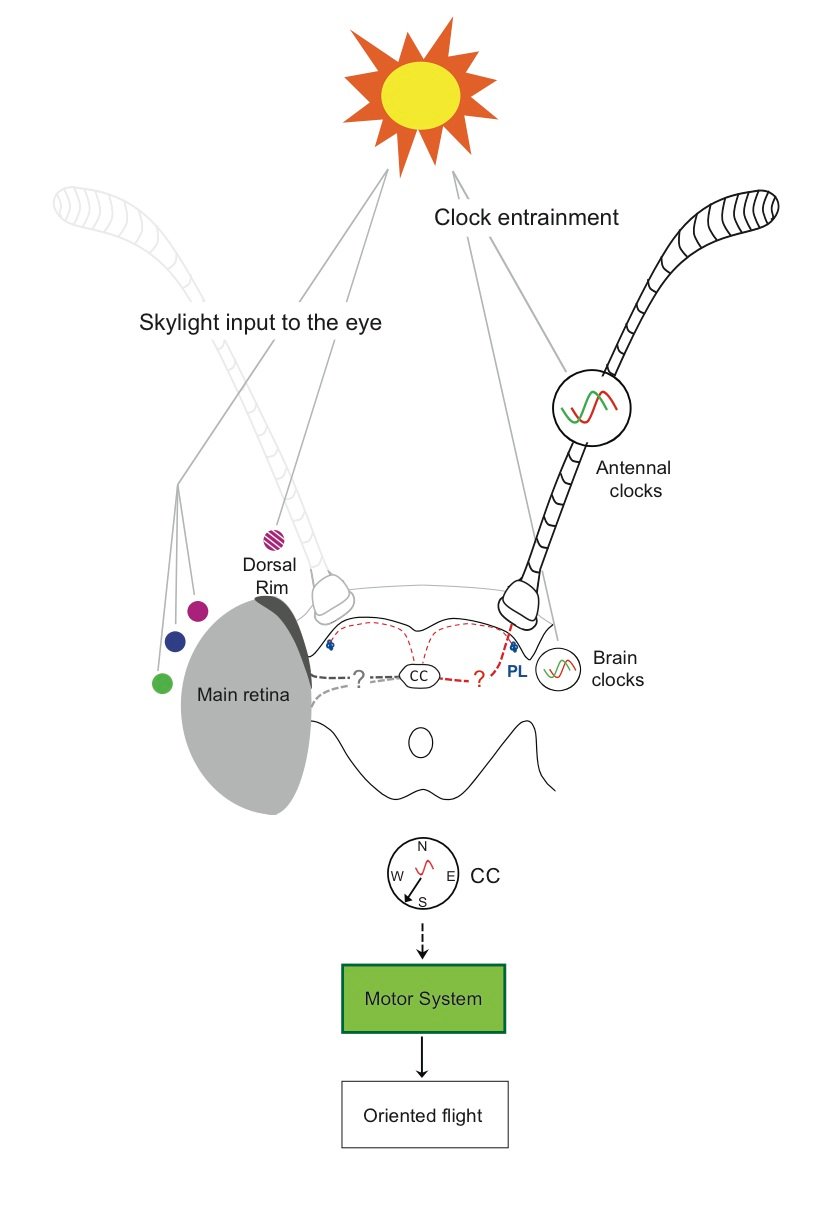Clock-Compass Interactions
We have found that the antennae are necessary for proper time- compensated sun compass orientation (Merlin et al., 2009). Our results are consistent with a major role for antennal clocks in the timing of sun compass orientation in migratory monarchs. The antennae may function alone, without any influence from brain clocks, or antennal output may influence the integration of timing information from brain circadian clocks within the sun compass structure at the level of its output pathways. Both possibilities suggest the existence of a crucial but hitherto unknown neural circuit between the antennae and the central complex system—a possibility we are vigorously pursuing.

Model of the components and circuitry involved in the time-compensated sun compass mechanism.
(left) Skylight input to the eye: Skylight cues provide directional information that is sensed by the eye and ultimately integrated into the central complex (CC), the presumed site of the sun compass. The dorsal rim area of the eye senses the angle of plane-polarized, ultraviolet light (small violet circle with crosshatches), while the main retina senses color gradients (small filled violet circle, small blue circle, and small green circle) or senses the sun itself (i.e., does not discriminate between the three colors). Multicircuit pathways, yet to be defined, connect eye-sensed skylight information to the central complex (dashed black and grey lines with question mark).
(right) Clock entrainment: Skylight in the blue range directly entrains (synchronizes) circadian clocks in the antennae and brain to the 24-hour day through direct light action on CRYPTOCHROME1. An as yet unknown neural pathway connects antennal clocks to the central complex (thick dashed red line with question mark); this is a major pathway providing timing information to the central complex. A neural pathway that connects clock cells in the pars lateralis (PL; blue spots) area of the brain to the central complex (thin dashed red line) is likely to exist; this may provide a minor pathway for timing sun compass orientation.
(below) Signal integration: Information from the sun compass and circadian clock is integrated in the central complex itself or in its output pathways. Central complex output pathways communicate with the motor system to ultimately control continuous flight in the southwesterly direction.